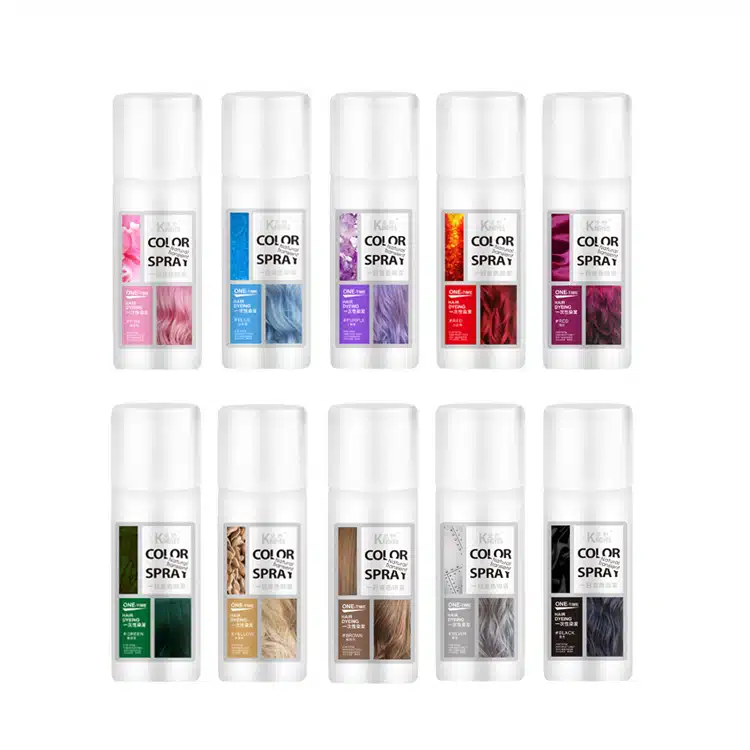
Quelle est la différence entre un déodorant humide et un déodorant sec ?
Table des matières
You’re not alone! With so many options like déodorant en spray, stick deodorant, roll-onet gel deodorant, it can be confusing to pick the one that’s best for you. In this article, we’ll break down the differences between these types of déodorant to help you make an informed choice.
Understanding Deodorant vs. Antiperspirant
Before diving into the different types, let’s clarify the difference between antiperspirant and deodorant.
Déodorant
- Objectif: Masks odeur corporelle caused by bacteria breaking down sweat.
- Fonction: Contains fragrances and antibacterial agents.
- Does Not: Block sweat glands.
Antitranspirant
- Objectif: Reduces sueur production.
- Fonction: Contains aluminum salts that temporarily block sweat glands.
- Often Combined: Many products are antiperspirant deodorants, offering both sweat reduction and odor masking.
Note: Choosing between a déodorant or antiperspirant depends on whether you want to control odor, sweat, or both.
What Are the Different Types of Deodorant?
Il existe plusieurs different types of deodorant, each with its own characteristics.
Common Forms
- Déodorant en spray
- Déodorant en stick
- Roll-On Deodorant
- Gel Deodorant
- Solid Deodorant
Let’s explore each one in detail.
Spray Deodorant: Pros and Cons
Déodorants en spray are applied by spraying a mist onto the aisselles.
Pros
- Quick Drying: They sécher rapidement on the skin.
- No Residue: Less likely to leave marques blanches ou stains on clothes.
- Application facile: Covers a large area with a simple spray.
- Hygienic: No direct contact with the skin, reducing contamination.
Cons
- Aerosol Concerns: Some contain aérosol propellants that may be harsh for sensitive skin.
- Inhalation Risk: Care must be taken to avoid inhaling the spray.
- Not Ideal for Sensitive Skin: May contain alcohol or fragrances that irritate sensitive skin.
Citation: “Spray deodorant is perfect when you’re on the go and need a quick refresh without worrying about wetness.”
Stick Deodorant: Is It Right for You?
Stick deodorant comes in a solid stick form that you apply directly to your underarms.
Pros
- Facile à utiliser: Simply apply the déodorant by gliding it onto the skin.
- Long-Lasting: Provides extended protection throughout the day.
- Less Irritating: Often gentler for those with peau sensible.
- No Wet Sensation: Doesn’t leave a wet sensation after application.
Cons
- May Leave Marks: Can sometimes leave marques blanches on dark clothing.
- Longer Drying Time: Some sticks might take longer to dry on the skin.
Conseil: If you prefer a deodorant that feels dry and is easier to apply, a solid deodorant might be the right choice.
Roll-On Deodorant Explained
Roll-on deodorants feature a ball applicator that rolls the product onto your skin.
Pros
- Precise Application: Allows you to target specific areas.
- Sensation de légèreté: Typically feels light and unobtrusive.
- Good for Sensitive Skin: Often gentler on your skin due to fewer harsh chemicals.
Cons
- Wet Feeling: Can leave a wet sensation that takes time to dry.
- Longer Drying Time: You may need to wait before dressing to avoid stains.
Note: Roll-on deodorants offer a balance between sticks and sprays, but you might need to wait for them to dry completely.
Gel Deodorant: Wet vs. Dry Sensation
Gel deodorants are applied like sticks but have a gel consistency.
Pros
- Clear Application: Goes on clear, helping to avoid white residue.
- Cooling Effect: Provides a cool feeling upon application.
- Effective Protection: Works well to combat sweat and odor.
Cons
- Feel Wet: May leave your underarms feeling wet initially.
- Longer Drying Time: Requires time to dry on the skin.
Conseil: If you don’t mind a wet sensation and prefer a clear application, gel déodorant could be a good fit.
Solid vs. Gel Deodorant: What's the Difference?
Comprendre la difference between gel and solid deodorants helps in choosing the right one.
Solid Deodorant
- Texture: Firm and dry.
- Application: Glides on smoothly without feeling wet.
- Pros: Quick application, less drying time.
Gel Deodorant
- Texture: Semi-liquid or gel-like.
- Application: May feel wet and take time to dry.
- Pros: Clear formula reduces staining on clothes.
Comparison Table:
| Fonctionnalité | Solid Deodorant | Gel Deodorant |
|---|---|---|
| Temps de séchage | Quick | Plus long à sécher |
| Résidus | May leave marques blanches | Less likely to stain |
| Sensation | Dry upon application | May feel wet |
Conclusion: Choosing between gel and solid comes down to personal preference regarding drying time and sensation.
Do Some Deodorants Leave White Marks or Stain Clothes?
A common concern is whether deodorants will leave marks sur les vêtements.
Deodorants That May Leave Marks
- Déodorant en stick: Can leave marques blanches on dark-colored clothes if not fully dry.
- Solid Deodorant: Similar to sticks, may cause staining.
Deodorants Less Likely to Stain
- Déodorant en spray: Sèche rapidement and usually doesn’t leave residue.
- Gel Deodorant: Clear formula helps avoid white stains.
- Roll-On Deodorant: Depends on the formula; some may leave marks if not dry.
Conseil: To avoid white marks, allow déodorant to dry completely before dressing.
How to Choose the Right Deodorant for Sensitive Skin
Si vous avez peau sensible, selecting the right deodorant is crucial.
Considérations
- Ingrédients: Rechercher natural deodorant options without harsh chemicals.
- Type: Roll-on et déodorants en stick are often gentler on your skin.
- Fragrance-Free: Choose products without added fragrances that might irritate.
Conseil: Test a small amount on your skin first to ensure you don’t react negatively.
Stick vs. Spray Deodorant: Which One Is Best?
Deciding between stick or pulvériser deodorant depends on your needs.
Déodorant en stick
- Pros:
- Direct application.
- Good for sensitive skin.
- Long-lasting protection.
- Cons:
- May leave marques blanches.
- Longer drying time.
Déodorant en spray
- Pros:
- Sèche rapidement.
- Less likely to leave stains.
- Easy to use.
- Cons:
- Potential inhalation of aerosols.
- May not be suitable for sensitive skin.
Conclusion: There’s no one-size-fits-all answer. The meilleur déodorant is the one that fits your lifestyle and skin type.
Questions fréquemment posées
1. What’s the difference between antiperspirant and deodorant?
- Déodorant masks odeur corporelle but doesn’t stop sweating.
- Antitranspirant reduces sueur by blocking sweat glands and may also mask odor.
2. Do gel deodorants take longer to dry?
Oui, gel deodorants often have a longer drying time compared to solids or sprays.
3. Can deodorants stain clothes?
Some deodorants, especially sticks and solids, can leave marks ou stain clothes if not allowed to dry properly.
4. Which deodorant is best for people with sensitive skin?
Natural deodorant options or those formulated for sensitive skin, such as certain roll-on ou déodorants en stick, are typically better.
5. Is spray deodorant better than stick deodorant?
It comes down to personal preference. Sprays sécher rapidement and are less likely to stain, while sticks offer precise application and may be better for sensitive skin.
6. How do I choose the best type of deodorant for me?
Consider your skin type, sensitivity, preference for wet or dry sensation, and whether you need antiperspirant properties to choose the right deodorant.
Principaux enseignements
- Déodorants come in various forms: pulvériser, bâton, roll-on, gelet solid.
- Wet deodorants (like gels and roll-ons) may feel wet upon application and take longer to dry.
- Dry deodorants (like sticks and solids) go on dry and have a quicker drying time.
- Déodorants en spray sécher rapidement and are less likely to leave white marks on clothes.
- Sensitive skin users should opt for gentle formulas, often found in bâton ou roll-on deodorants.
- Les difference between wet and dry deodorant often comes down to personal preference and skin type.
- Always allow déodorant to dry completely to prevent stains and ensure effectiveness.
Now you’re equipped with the knowledge to choose the deodorant that will keep you fresh all day long without worrying about stains or irritation!
Résumé à puces
- Deodorant vs. Antiperspirant: Deodorants mask odor; antiperspirants reduce sweat.
- Types of Deodorant:
- Déodorant en spray: Quick-drying, less likely to stain.
- Déodorant en stick: Easy to use, may leave marques blanches.
- Roll-On Deodorant: Precise application, may feel wet.
- Gel Deodorant: Clear application, longer drying time.
- Solid Deodorant: Dry upon application, may stain clothes.
- Wet vs. Dry Deodorant:
- Wet Deodorants: Include gels and roll-ons; may feel wet and take longer to dry.
- Dry Deodorants: Include sticks and solids; sécher rapidement and have less wet sensation.
- Choosing for Sensitive Skin:
- Optez pour natural deodorant or products formulated for sensitive skin.
- Roll-on et déodorants en stick are often gentler.
- Preventing Stains:
- Laisser le déodorant dry completely avant le dressage.
- Pulvérisation et gel deodorants are less likely to leave marks on your clothes.
- Personal Preference Matters: Le right deodorant depends on your needs, comfort, and lifestyle
Choose the deodorant that suits you best and smell fresh all day!
Commentaires

Comment utiliser la lotion pour le corps pour une peau souple et hydratée ?
Vous souhaitez connaître la meilleure façon d'utiliser une lotion corporelle pour obtenir une peau douce et éclatante ?

Which Type Of Hair Colour Is Best?
Selecting the right hair color can transform your look and boost your confidence.

À quoi sert la mousse de bain ?
Vous êtes-vous déjà demandé à quoi sert la mousse de bain et comment elle peut améliorer votre routine de douche ?

À quel type de cheveux la mousse convient-elle le mieux ?
Vous êtes-vous déjà demandé quelle mousse capillaire convenait le mieux à votre type de cheveux ?

How Long Does Hair Fiber Spray Last On Hair?
Understanding how long hair fibers last is crucial for anyone looking to effectively manage thinning hair.
- +86 151 1839 7303
- [email protected]
- Lun-dim 07:00-23:00
Tags

What Do Cosmetic Manufacturers Do?
Ever wondered how your favorite lipstick, foundation, or moisturizer goes from an idea to the beautifully packaged product on the shelf?

Do You Set Before Or After Setting Spray?
The world of makeup is filled with tips, tricks, and techniques to achieve a flawless, long-lasting makeup look.

What Happens If You Don’t Use Setting Spray?
Setting spray is often lauded as the ultimate secret to a long-lasting, flawless makeup look.






